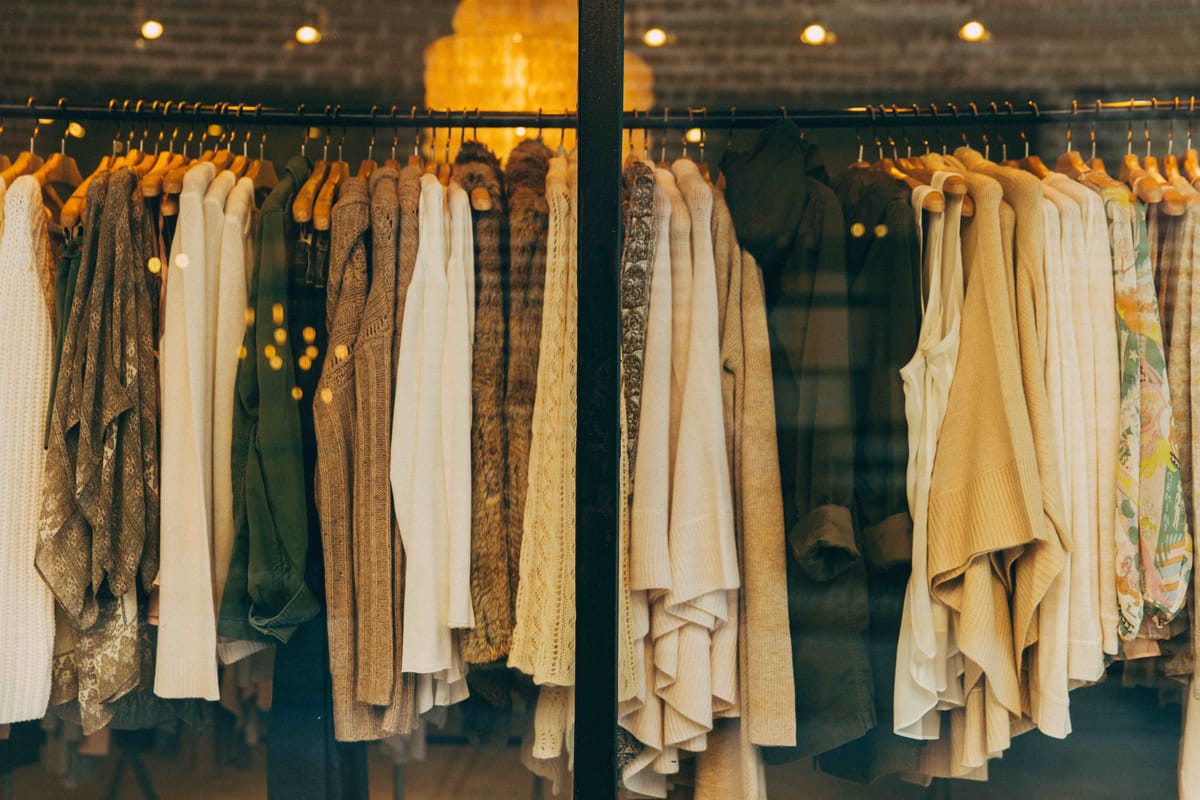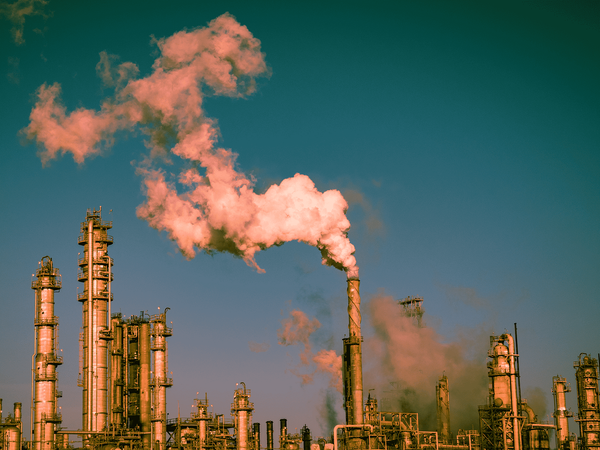EU targets textile waste reduction

On Wednesday, March 30, the European Commission communicated the new EU strategy for sustainable and circular textiles. This strategy will focus on the practice of eliminating overproduction and overconsumption of textiles and subsequently fast fashion.
In 2019, more than 160,000 European companies were engaged in the clothing and textile sectors, employing approximately 1.5 million people. Although the sector generated a turnover of EUR 162 billion, it also became responsible for 10% of total carbon emissions.
The 2020 Circular Economy Action Plan and the 2021 update of the EU Industrial Strategy have identified textiles as one of the key categories that require an urgent transition to sustainable and circular business models.
Around the world, a truck full of textiles is landfilled or incinerated every second, and only in the EU, approximately 5.8 million tons of textiles are discarded every year. These negative practices are attributed to the current linear model system, powered by a lack of reduction, reuse, repair, and fiber-to-fiber recycling of textiles.
Although many businesses and sectors are working hard to convert their business model into a circular business model, the slow transition phase means the climate footprint of the sector is still high. The EU aims by 2030 to acquire textile products that are long-lived, recyclable, and free of hazardous substances. Some focus of the Commission’s new strategy are:
Mandatory Eco-design
Stop Destroying Unsold or Returned Textiles. During the production phase, about 25-40% of leftover fabrics are either landfilled or incinerated. This loss of materials is equivalent to a total waste of value and resources.
The principle of circular economy teaches us to keep the products and materials in use for as long as possible but the extension of a product life is only possible through an eco-effective design, which addresses the durability of color, strength, and fabrics.
Most clothes or textiles are a blend of multiple fibers, commonly polyester and cotton. The proper technologies to recycle and separate these fibers are still lacking, and therefore, become more energy-intensive.
The Commission will develop binding product-specific eco-design requirements to increase textiles’ performance in terms of durability, reusability, reparability, and fiber-to-fiber recyclability by eliminating the use of hazardous substances. The Commission will also promote digital technologies to assist on-demand custom manufacturing and reduce the return of clothes that were bought online.
Tackle Microplastics Pollution. Approximately 60% of fibers used in clothing are synthetic, and this amount is growing every year. From that, around 40,000 tons are released in the effluent of washing machines every year, which contributes highly to the increase of microplastic pollution. The Commission plans to address this issue by reducing the use of synthetic fibers and providing prevention measures at the different lifecycle stages. More on this plan will be presented in the second half of 2022.
Digital Product Passport. The Commission will introduce a Digital Product Passport for textiles that identifies the fiber composition and indicates any non-textile parts of animal origin, including mandatory disclosure of sustainability and circularity parameters, products’ size, and place of manufacture with a digital label.
Genuine Green Claims. A recent screening suggests that about 39% of green claims in textile, garments, and shoes could be deceptive, which discourages even the consumers who are willing to purchase more sustainable products from buying them. The new EU rule is to provide consumers a commercial guarantee of durability, including a reparability score, whenever this is available. The claims, such as “green”, “eco-friendly”, and “good for the environment”, should only be provided by recognized excellence, based on the EU Ecolabel.
Boost Reuse and Recycling of Textile Waste. In the EU, approximately 38% of used clothing and textiles are collected for recycling each year. The remaining 62% are discarded in waste streams. Several EU Member States already have or are considering the introduction of Extended Producer Responsibility (EPR) requirements for textiles to establish a separate collection of textile waste by the beginning of 2025. As part of the forthcoming revision of the Waste Framework Directive in 2023, the EU will extend the responsibility rules to producers, to ensure the design for circularity and create an economy throughout the lifecycle from collection to usage to reuse, and recycling.
Creating the Enabling Conditions
Transition Pathway for the Textiles Ecosystem. Commission proposes the co-creation of transition pathways with stakeholders to commit to circularity and circular business models. These actions will identify and strengthen sustainable competitiveness, digitalization, and resilience. The co-creation process will kick-off in the second quarter of 2022.
Stopping Fast Fashion. To encourage consumers away from fast fashion, companies must first provide new circular business models. Some of the well-established services in this model could include product-as-service models, return services, collection of old clothes, personalization, and repair services. Under the Waste Framework Directive, companies should emphasize shifting to more sustainable business models than dependency on fossil fuels. To accelerate this change, the Commission will put quality, durability, repair, and reuse at the core and promote the transition under the motto #ReFashionNow.
Ensuring Fair Competition in the Internal Market. The increasingly complex global supply chains and the ever-growing online market still face the challenges of protecting consumers’ safety and a well-functioning internal market. The newly created EU Product Compliance Network will coordinate and support cross-border market surveillance practices and ensure cross-sectoral coordination between different Administrative Cooperation Groups (AdCos) on Chemicals and Textile Labelling.
Supporting Research and Development
- Under the #ReFashionNow motto, the Commission-supported Public Private Partnerships will define future research initiatives. An initiative, such as the Made in Europe Partnership will promote the digitally competitive, green, socially sustainable, and resilient use of textiles without fossil fuels.
- The European Partnership Process4Planet aims at promoting circularity and extensive decarbonization of European process industries through initiatives such as Hubs for Circularity (H4C). In addition, existing programmes, such as the European Institute of Innovation and Technology (EIT) will promote specific calls under Horizon Europe.
- The Commission will co-finance and support the projects on technological innovation for circular fashion business models under LIFE. The European Regional Development Fund will support available research and innovation, digitalization, SME competitiveness, skills development, digital connectivity, circular product design, and production processes at a regional level.
- The Commission will encourage companies to develop the European Green Deal Dataspace and the Manufacturing Dataspace, to more easily share and reuse data across companies.
- The Network of European Digital Innovation Hubs will provide support to develop the digital infrastructures to test new digital technologies. Member states will support research, innovation, and investments by using loans and grants from the Recovery and Resilience Facility (RRF).
Skill Development. About 40% of European companies recently reported having a green skills gap. In line with the New European Skills Agenda, the Digital Compass 2030, and the objectives of the Porto summit, the Pact for Skills for the textiles ecosystem was launched on 16, December 2021 through which the Commission commits to support upskilling, reskilling, and the acquisition of green and digital skills, including knowledge on life cycle assessment and value chain assessment.
Among the agreed actions are partnerships between industry, public authorities, and educational providers, promoting diversification in company management by up to 5% each year, guidance for women to higher positions; supporting 10,000 SMEs in their digitalization efforts; designing 20 new educational processes and tools responding to green and digital skills; increasing the offer of apprenticeships in the sector by 20%.
Global network of the sustainable textiles value chains
The EU will join and engage with global progress through G7 and G20, in the context of the Global Alliance for Circular Economy and Resource Efficiency (GACERE) and the United Nations Environment Assembly.
Due Diligence for Environmental and Social Fairness. In 2019, the EU was one of the largest importers of clothing, worth approximately EUR 80 billion. The Corporate Sustainability Due Diligence Directive introduces a horizontal due diligence obligation for companies to identify, prevent, mitigate, eliminate, and account for actual and potential adverse impacts on human rights, including labor rights, and the environment in companies’ operations.
Furthermore, the EU Strategy on the Rights of the Child underlines the “zero tolerance towards child labor”. The Commission is also preparing a new legislative initiative to effectively prohibit the placing on the EU market of products made by forced labor, including forced child labor.
Addressing the Challenges From the Export of Textile Waste. In 2020, approximately 1.4 million tonnes of textile waste were exported outside the EU. The Commission proposed new EU rules on the shipment of waste that the export of this waste to non-OECD countries would be only possible if countries notify the Commission of their involvement to import specific types of waste and manage it sustainably.
To avoid that waste streams being falsely labeled as second-hand goods when exported from the EU, the Commission will work to increase transparency and will strictly develop specific EU level criteria to make a distinction between waste and certain second-hand textile products.



